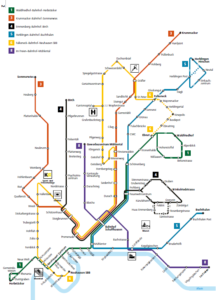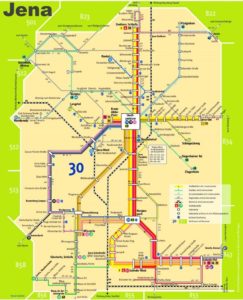Thank you for the opportunity to make a submission on the proposed BusConnects network for Limerick City, which I am making in a personal capacity. I’d like to compliment the project team on how they have run this consultation, in particular the wide range of materials produced, the in-person and online consultation events which provided an opportunity for people to learn more and feed back their suggestions. The use of Irish Sign Language interpreters at two of the in-person events is an initiative that is particularly welcome.
I’d like to express my broad support for the BusConnects network for Limerick, the increased frequency and coverage will make Limerick a better place to live, work and receive an education. With associated infrastructural changes, this network plan provides the basis for the bus to become the main form of transport for many people across the city, instead of a last resort option taken by those who have no other choice.

There is one area for improvement that I would like to highlight, and that is the lack of integration between the proposed routes, and in particular the decision to route two of the four high-frequency routes away from the main bus and rail station on Parnell Street.
I believe this arrangement is not consistent with bus networks in other small European cities with bus modal share far in excess of the modal share in Limerick. I have given three examples together with route network maps in this document.
In these examples, all significant bus routes interchange at the train station. It should be noted that in these examples the train stations are also slightly peripheral to the city centre, as is the case in Limerick.
Having all routes meet at the train station would offer interchange from and to a single bus route to:
- Other city routes
- Rural bus routes including those delivered under the National Transport Authority’s Connecting Ireland programme, which represents the largest increase in rural public transport in Ireland in decades
- Intercity Expressway bus routes to Cork, Galway, Waterford, Killarney, Tralee and further afield
- Intercity train services to Dublin, Cork, Galway and Castleconnell/Birdhill/Nenagh/Cloughjordan/Roscrea
Having all routes meet at a single point would offer crucial legibility to the city bus network, where passengers could be confident that they can transfer to any route by going to a single transfer point.

The only significant Transport-Oriented Development scheme planned for Limerick City is the scheme proposed by the Land Development Agency (LDA) around Colbert station, which the LDA has estimated could produce 2,800 residential units. It is appropriate to serve such a site with all the high-frequency city bus routes given the proposed population size and density.
Serving the bus and rail station need not need a large detour for buses. For example, changing the path of route 4 involves a very small increase in route distance as can be seen in the diagram below. If route 4 was routed via Mulgrave St and Childers Rd as the current 304 is (and which would offer greater road width for bus segregation), the route via the station would be even shorter than a route serving O’Connell St.
In conclusion I would once again like to welcome the proposed network, and to express my support for a small tweak to routes 2 and 4 so that they could directly serve Colbert Station.


